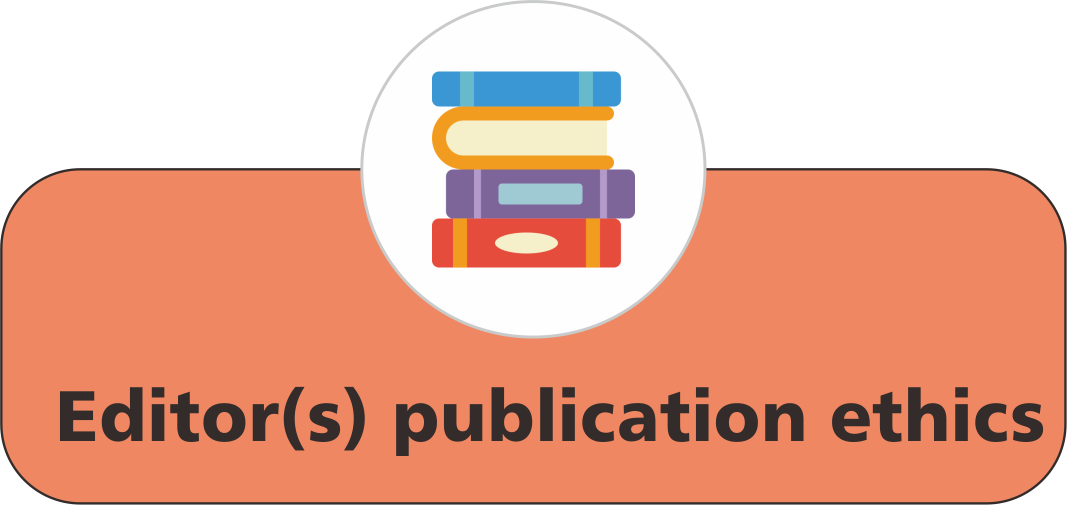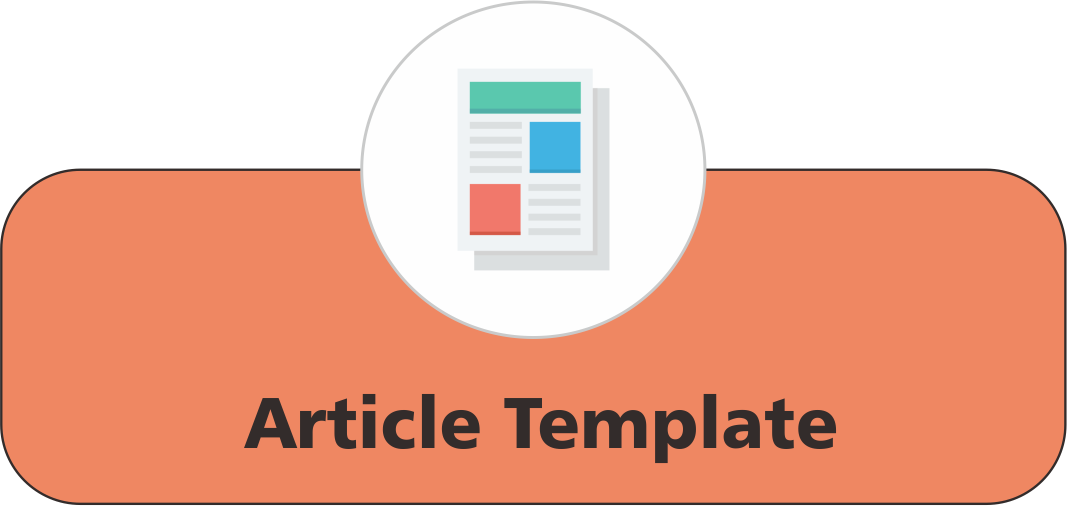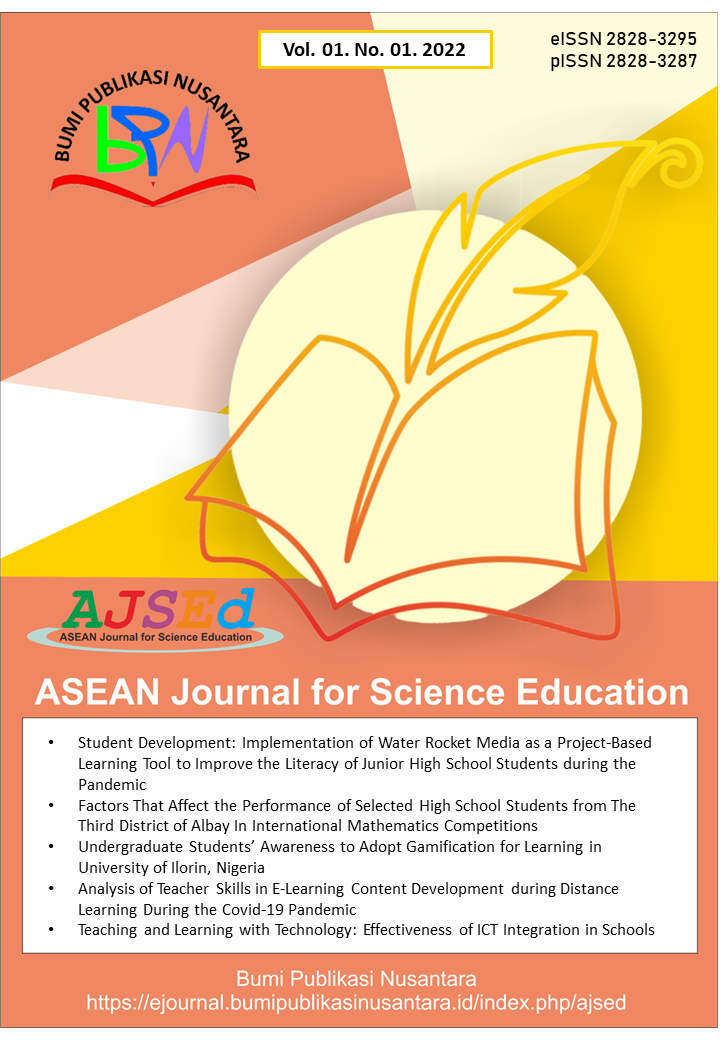Development of an Animation Package in Biology for Teaching Vertebrate, Anatomy, and Physiology
 ), A. O. Onojah(2), A. M. Ishyaku(3), S. B. Adamu(4),
), A. O. Onojah(2), A. M. Ishyaku(3), S. B. Adamu(4),
(1) Aminu Saleh College of Education
(2) University of Ilorin
(3) Bauchi State University
(4) Aminu Saleh College of Education
 Corresponding Author
Corresponding Author
Abstract
Keywords
References
Abimbola, I. O., and Abidoye, F. O. (2013). Views of Kwara State senior school biology teachers on the status of ecology teaching. Journal of Curriculum and Instruction, 8(1), 1-10.
Aloraini, S. (2022). The impact of using multimedia on students’ academic achievement in the college of education at King Saud University. Journal of King Saud University-Languages and Translation, 24, 75-82.
Ayupratiwi, T., Nandiyanto, A. B. D., Kurniawan, T., and Bilad, M. R. (2022). Online learning using audio-visual for elementary school students during the Covid-19 pandemic. ASEAN Journal of Educational Research and Technology, 1(2), 125-132.
Babagana, M., Idris, U. S. B., Chado, A. M., Ndagi, M., and Jibril, M. N. (2016). Biology teachers’ perception of integrating mobile phones as instructional strategy in teaching senior secondary school students in Minna metropolis, Nigeria. Benue State University Journal of Education (BSUJE), 16(1), 66-74.
Hanna, H., Abdul, S. L., Cruz, A. D. B. D., Manalo, Z. T., Papna, F. M. L., and Falle, J. A. (2021). Game-based activity method: A case of grade 5 students. Indonesian Journal of Teaching in Science, 1(1), 13-16.
Iida, H., and Khalid, M. (2020). A paradigm shift from optimal play to mental comfort: A perspective from the game refinement theory. International Journal of Informatics, Information System and Computer Engineering (INJIISCOM), 1(1), 47-78.
Joshi, A. (2012). Multimedia: A technique in teaching process in the classrooms. Current World Environment, 7(1), 33-36.
Mayer, R. E. (2002). Multimedia learning. Psychology of learning and motivation, 41, 27-29.
Moreno, R., Mayer, R. E., Spires, H. A., and Lester, J. C. (2001). The case for social agency in computer-based teaching: Do students learn more deeply when they interact with animated pedagogical agents?. Cognition and instruction, 19(2), 177-213.
Wahyu, A. G. M., and Sakti, A. W. (2023). The effect of the implementation of animated learning videos on increasing students' motivation and learning outcomes in citizenship education during the covid 19 pandemic in junior high schools. ASEAN Journal of Science and Engineering Education, 3(2), 139-148.
Wambiri, G., and Ndani, M. N. (2017). Kenya primary school teachers’ preparation in ICT teaching: Teachers’ beliefs, attitudes, self-efficacy, computer competence and age. African Journal of Teacher Education (AJOTE), 5(1), 1-15.
Yusuf, M. O., and Afolabi, A. O. (2010). Effects of computer assisted instruction (cai) on secondary school students' performance in biology. Turkish Online Journal of Educational Technology-TOJET, 9(1), 62-69.
Article Metrics
Abstract View : 1362 times
: 1362 times Download : 801 times
Download : 801 times
Refbacks
- There are currently no refbacks.
Copyright (c) 2022 Bumi Publikasi Nusantara

This work is licensed under a Creative Commons Attribution-ShareAlike 4.0 International License.







